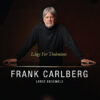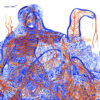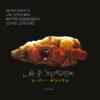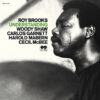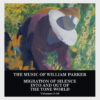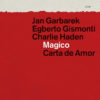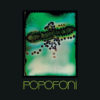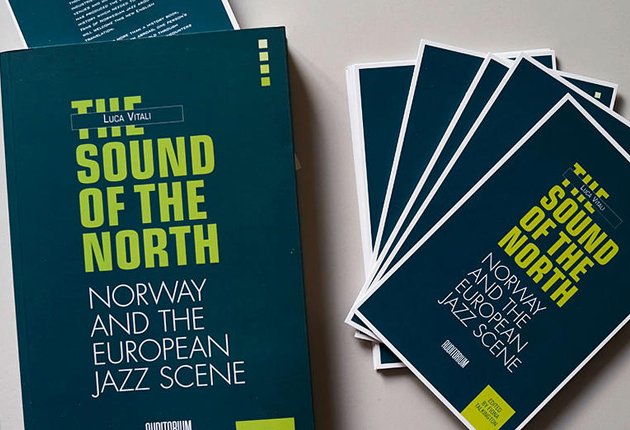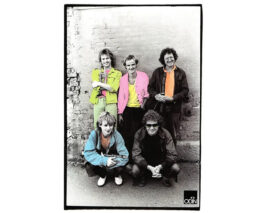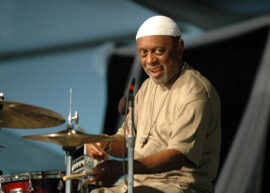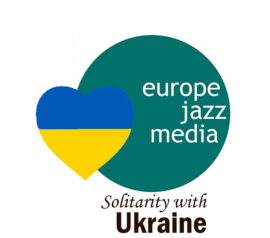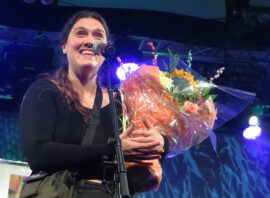Luca Vitali: The Sound of the North – Norway and the European Jazz Scene, Edited by Fiona Talkington, Translated by Melinda Mele,
Auditorium International 01, Hans & Alice Zevi Editions, Milano 2015, 255 p
For many of us, Luca Vitali from Bologna in Italy – with his now standard goatie – has become a familiar face at Norwegian jazz festivals and clubs. He got fascinated by the then rapidly evolving Norwegian jazz scene about ten years ago and has since then followed it closely as jazz journalist, for e.g. the Italian AllAboutJazz.
Very early on he used any opportunity to raise a dialogue with anyone interested about what it was that explained the international success of Norwegian jazz during the last decades. A year ago he published the book he had worked on for several years – the book we early on understood was what was behind all the curious questions he had raised over these many years. The book «Il Suono del Nord – La Norvegia, protagonista della scena europea» was witten in Italian – with primarily an Italian readership in mind. But many of us got fascinated by his arguments and hoped that it would become available for a wider readership.
At the 2014 Punktfestival, the brainchild of the electronica-minded live samplers Jan Bang and Erik Honoré in Kristiansand, the book was launched for a Norwegian and international audience. At the event the Norwegian Ministry of Foreign Affairs made public its decision to fund an English edition of the book. The argument was its possible rôle as a gate opener for Norwegian bands abroad, and that as such it supported the objectives of the Ministry’s strategies and policies for funding the export of Norwegian music. In October/November this year the English edition was launched internationally.
The book has two central parts. The first part outlines the evolution of Norwegian jazz from the early 1960s up to 2000. The second part «The sound of contemporary jazz in Norway» gives an outline of som aspects of the Norwegian sceneat the start of the new Millenium’s second decade.
The first part takes its starting point in George Russell’s famous residency in Norway and Sweden from 1964 to 1969-70. Vitali points rightly to the rôle Russell and his collaboration with NyMusikk and the musician-initiated Norsk Jazzforum played in creating a framework for the then emerging new generation of young jazz musicians. In particular its importance for what he dubs the «ECM generation», primarily centered on Jan Garbarek, Terje Rypdal, Arild Andersen and Jon Christensen and the immediae rôle models they provided.
He also points to the importance of Don Cherry during the years he was settled in Sweden. The third American musician he lifts up to the explain the evolution of a new framework for Scandinavian jazz, is Quincy Jones’ 1958-collaboration with the Swedish Radio Studio Orchestra. His hypothesis is that these provided required impetus for the change that happened on the Norwegian scene after 1965.
However this happened not just in Norway, but equally also in Sweden, where a new generation of Swedish musicians emerged – influenced by the same inspirations and sources as in Norway. Names that were well established household names by 1970 – even in Norway; Bobo Stenson, Palle Danielsson, Lennart Åberg, Bengt Berger, etc.
It is really recommendable that Vitali lifts up the importance of the sound engineers in this history, not just Jan Erik Kongshaug at Rainbow, but also Sven Persson and a host of other ones, up to one of today’s strong «voices» in this arena, Asle Karstad. The first part does not read as a chronological history, but more as a series of essays, on the importance of the Oslo-based Club 7, the connection of jazz and folk music, on the emergence of nu jazz and of the club Blå during the mid-1990s etc. Each of the 21 chapters reads like a separate essay, highly in line with the character of this book.
This book is neither a musicological nor a social history – nor does it pretend to be neither. It should be read as an Italian music lover’s attempt to understand what it is that fascinates him with the multi-facetted face of Norwegian jazz today. The book is evidently a labour of love, the writing and the attempts at analysis is done con amore, to remain in the mother tongue of the author.
The construction of the second part, the description of the contemporary scene, is interesting. Here Vitali tries to draw links to the previous historical outline of part I, with sections such as «Garbarek’s legacy», «Jon Christensen and the new drumming school», «Jon Hassell’s influence» etc. But in contrast to the first part, this is more of a continuous essay by itself.
Vitali shows an impressive understanding and overview of the recent Norwegian jazz history and its historical antecedents. If only for this impressive sagacity, the book deserves its place. But there is more. In addition Vitali has spent many hours selecting among not just his own photographs from the last decade, but also mulling over historical photos in the collections of Norsk Jazzarkiv. Perhaps it should have been mentioned that the guy photographed by Per Rønnevig in front of Metropol, the famous Oslo jazz club in 1960-64, cf. p 67 – is Bengt Hallberg. But this is a minor issue.
As it also is when Norsk Jazzforum – the Norwegian Jazz Association is described as a government agency under the Ministry of Foreign Affairs, and that Eric Dolphy is described as still alive in 1965! It is more on the humorous side when Erik Hillestad of Kirkelig Kulturverksted, described correctly in the Italian text as being «direttore di un coro giovanile», has during the translation become «director of a youth choir», referring to when I suppose he was the conductor of the choir «Crossing», a choir of which the present reviewer was a member while Hillestad was just the drummer in the band.
What should be pointed out though, is that the strong side of the book is its description and collation of the information Vitali has gotten from his sources. He is telling a consistent and persuasive story about Norwegian jazz during the last 50 years. However, when he attempts to provide analysis and discuss why and how these developments evolved, the book show some weaknesses. Firstly, because Vitali has not got all his socio-economic Norwegian facts right. Oslo Metropolitan Area does not have 600 000 inhabitants, but nearly the double of this. It is also quite a stretch to describe Tønsberg as rural. And so it goes on.
But more importantly, with Vitali’s attempts at analysis, he falls prey to a series of common false myths and mistakes about Norway. It should be said that these myths and mistakes – though disproven over and over again – are also held by many Norwegians. So he will certainly have met them many times over during his interviews. But in telling his story he should not fall prey to his sources misconceptions. This is something Vitali knows well as a journalist.
One of the false myths he falls prey to is the myth surrounding the purportedly egalitarian culture of Norway and how it characterises social and political life. Social divides and power structures are there, but express themselves differently in social-democratic Scandinavia than in Mediteranean Italy. However, it is not a surprise that he does not see the expression of this myth among his respondents. After all, Vitali is not a social anthropologist.
But another common misconception that unfortunately colours some of Vitali’s arguments is that Norway just a few decades ago was a poor country, whether it was pre-oil&gas, or before the 20th century. This is completely wrong! And it would have been so easy for Vitali and his editor Talkington to check this out.
Pre-1970 Norway was among the 10-15 richest countries in the world. Norwegian common wealth is not created after 1975. Even before 1900 Norway was a rich European country. Why is it important. In explaining the cultural policies during the center-left government of 2005-13, Vitalit seems to suggest that this is more or less an windfall gain of the present petroleum economy, of the post-1970 petroleum gains of Norway.
In explaining the later economic and social policies of Norway after 1970, it seems that Vitali is unaware of the «Dutch disease» afflicting the Dutch economy after the expansion of the Dutch gas fields in 1958-60. Almost all of the austere economic policies, including the building up of the Petroleum Fund, in Norway after 1970 should be understood on the basis of this experience.
The idea that cultural funding in Norway is a concequence of a petroleum windfall gain is incorrect, and obscures an important political divide in the view of the culture and art in the European policies of today. As we see right- and center-right governments taking over in many European countries, public support and policies for culture and art are increasingly coming under pressure. The same has happened in Norway after the socalled «blue-blue» government took over in 2013.
Yes, we have been fortunate in Norway, as we somehow, more or less by luck at the macro-level and by the importance of key entrepreneurs at the micro-level, have been able to generate what now seems to be not just artistically successful jazz scene, but also a sustainable level of creativity. But it would be a gigantic failure to ascribe this to a post-petroleum windfall gain. And, more than anything, it does not take much to tear this down.
Luck has struck. But not where common myth would have it. In fact, luck preceedes any petroleum-based windfalls. One of the arenas where luck has played a key rôle, is at the support for young children and adolescents. A key resource of this has been the system of local cultural educational institutions aimed at young people. These «musikk and kulturskoler» have been pivotal in the generation of the present success of Norwegian jazz. Since the 1960s it has permeated the system of Norwegian generation of musial talent. The system of these local schools is also something we share with Sweden.
This leads me to the final point I want to make. The story that Vitali tells us is important beyond the Norwegian borders. His story would have gained tremendously by the inclusion of a comparative Norwegian-Swedish perspective. In Sweden it was not just the George Russell-Don Cherry-1958 Quincy Jones factors that were important. The Swedish residencies and collaborations of Stan Getz, Zoot Sims, James Moody and Quincy Jones during 1951-53 had an important impact on the Swedish scene, and therefore also on the Norwegian scene.
At the end, I have two major objections to the book. Firstly, this is a book that demands a topical and name index. Without it its use-value is seriously reduced. Secondly, the second contemporary part cries out for an updating. I can understand that it is presented as a translation of the original Italien edition, but it reads strangely for this book to be published in late 2015, funded by the Ministry of Foreign Affairs, with a contemporanous text that reads sine temporanous.
In total, Luca Vitali has written an excellent book. He shows an impressive lexicographical knowledge about Norwegian jazz, and his points of describing the music are fascinating. He suggests influences and relations that should be headed in future jazz research. Even though Vitali has not delivered the final answers – which is definitely not surprising to Luca Vitali. The book is generally well written and easily read.
In total: It is highly recommended!
Text: Johan Hauknes

